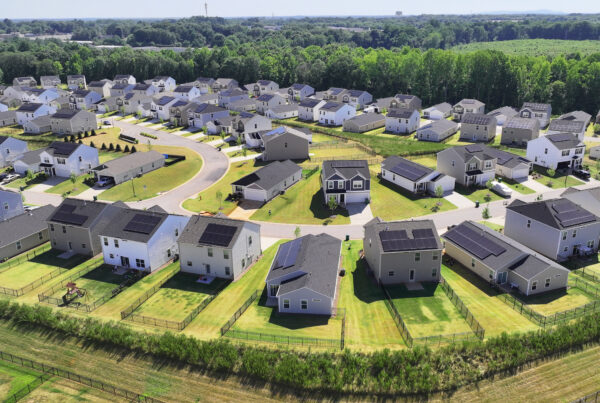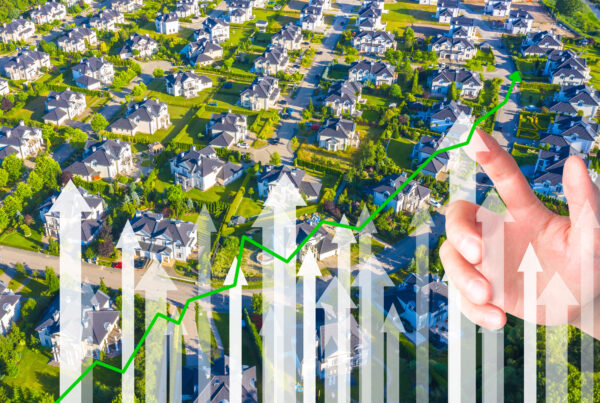Whether you’re an existing homeowner, a would-be buyer, renter, or a casual observer, the housing market impacts all of us.
Not only is housing one of our most fundamental needs, but its nuances have ripple effects that influence the broader economy, community development, and social stability.
In other words, where we live often significantly impacts how we live, making the state of the housing market a critical factor in shaping our quality of life, opportunities, and overall well-being.
Here are our top insights into the housing market in 2024 (so far) and our predictions about where it’s headed in the second half of the year.
”Anyone buying a home today will likely pay top dollar, at a high borrowing cost, for an asset that may have already peaked
Housing Trends in 2024
The housing market’s most significant problem remains unchanged: demand continues to significantly outpace supply.
It’s estimated that the US is between four and seven million homes short. To address this challenge, the US will need to add 1.86 million new homes for sale and for rent annually through 2033. Current estimates are that we will only build 1.4 to 1.6 million homes per year for the next three years so we are falling further behind.
This trend continues a long-standing mismatch between supply and demand, producing increasingly expensive housing. As one New York Times analysis concluded, “anyone buying a home today will likely pay top dollar, at a high borrowing cost, for an asset that may have already peaked.”
Fannie Mae estimates that home prices will increase 6.1 percent in 2024, while the Mortgage Bankers Association estimates they could increase by just 4.5 percent.
At the same time, mobility is increasingly difficult.
The combination of high home prices and high interest rates has created a lock-in effect, making people with mortgages under four percent unwilling or unable to move, further crimping supply while also producing pent-up demand for future housing stock.
In contrast, rental prices have remained relatively flat this year, and one analysis found that renting is on average 50% cheaper than buying in the country’s 50 largest metropolitan areas, a trend buoyed by the fact that the US is building more apartments than at any time since 1973.
Meanwhile, interest rates, while still historically low, are significantly higher than they were just a few years ago. The average 30-year fixed rate mortgage generally fluctuates between six and seven percent in 2024, a number that several industry associations believe will remain steady through the end of the year and beyond.
Taken together, the first half of 2024 produced a confusing housing market. On the one hand, values are soaring and more rental units are available than ever before. On the other hand, high mortgage rates, limited availability, and rising prices make buying a home more difficult.
What’s Ahead for Housing?
We expect that the five to seven percent mortgage rate is here to stay. This is higher than many potential buyers are used to, but it’s still low by historical standards.
Perhaps most obviously, we need to build more and more diverse housing.
In many cases, this is because of procedural challenges related to zoning and regulations, not logistical difficulties actually constructing new housing. As one Wall Street Journal headline declared, “Only zoning reform can solve America’s housing crisis.”
The US knows how to build homes, but arcane zoning restrictions and other procedural impediments prevent us from making sustained progress in this space.
Fortunately, we see some progress on this front.
Florida’s Live Local Act is a “statewide attainable housing strategy, designed to reduce carbon footprint to increase the availability of affordable housing opportunities for Florida’s residents, who desire to live within the communities they serve.”
The act provides funding for housing very low to moderate income households while also implementing programs supporting the development of multifaceted housing stock.
It’s one model that could influence how other state and local officials can overcome historical hurdles to building more housing.
Additionally, continued demand for rentals remains strong as people opt for the more affordable, less maintenance-intensive lifestyle enabled by rental housing.
Historically, two-thirds of housing was purchased and one-third rented, but income, demographic, and generational shifts are changing this dynamic.
This is part of a broader redefinition of the American Dream. While previous generations often attained the American Dream by purchasing a home and living in it for several decades, younger generations are moving away from this model.
One industry report found that ownership is expected to grow by one million per year while renter households are expected to expand by 524,000 per year through 2028.
Whether they are buying or renting, when younger generations do find housing, they want to minimize their environmental impact, driving increasing demand for sustainability features, including solar panels, heat pumps, and smart home technologies.
Offering these features increasingly differentiates housing options and appeals to people’s buying or renting preferences. For example, an analysis by Green Builder found that consumers want energy efficiency and say they are willing to pay more for sustainable housing.
”Only zoning reform can solve America’s housing crisis.
What Does It Mean For You?
The second half of 2024 may not look much different than the first half of the year. However, it does present important questions for existing owners and renters and those in the market for housing solutions:
- How will your housing decisions today impact your financial future in five or ten years?
- In what ways can you adapt your housing expectations to align with the realities of today’s market?
- What steps can you take in your local community to advocate for more diverse and affordable housing options?
As you navigate these complicated housing marketing dynamics, Quinn Residences is here to help. We offer smart, sustainable, and affordable rental solutions, combining affordability, sustainability, and modern living for today’s renters.
Whether you’re looking for a temporary home or a long-term residence, our rental solutions can be a great solution for you.







